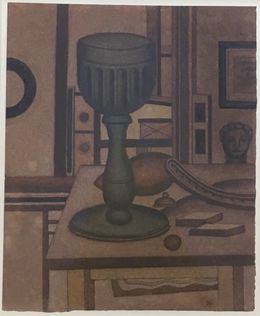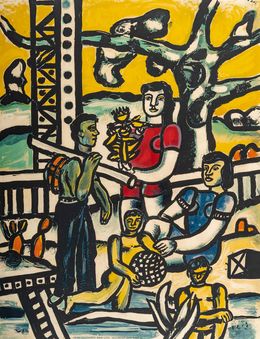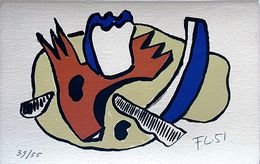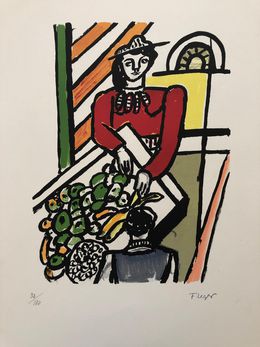



La preuve que l'homme descend du singe
Fernand Léger
Photography - 15 x 10 cm Photography - 5.9 x 3.9 inch
$13,917

Le Campeur et la femme en rouge
Fernand Léger
Print - 90 x 60 x 1 cm Print - 35.4 x 23.6 x 0.4 inch
$928















Cinq tournesols en paysage
Fernand Léger
Print - 65 x 50 x 0.5 cm Print - 25.6 x 19.7 x 0.2 inch
Sold





Still Life with Sunflowers
Fernand Léger
Print - 65.5 x 50 x 0.1 cm Print - 25.8 x 19.7 x 0 inch
Sold



La marchande de quatre-saisons
Fernand Léger
Print - 65.5 x 50 x 0.3 cm Print - 25.8 x 19.7 x 0.1 inch
Sold






Composition in Black and Yellow
Fernand Léger
Print - 38.5 x 55.5 x 0.1 cm Print - 15.2 x 21.9 x 0 inch
Sold


La marchande des quatre saisons
Fernand Léger
Print - 68 x 53 x 3 cm Print - 26.8 x 20.9 x 1.2 inch
Sold




Nature morte à la Coupe de Fruit
Fernand Léger
Print - 55 x 75.5 x 0.2 cm Print - 21.7 x 29.7 x 0.1 inch
Sold

Paysage aux deux oiseaux (Un poème dans chaque livre Paul Eluard) Ref BDNW2972
Fernand Léger
Print - 33 x 52 cm Print - 13 x 20.5 inch
Sold


Abstract art is an unnecessary luxury for modern man.
Biography
Fernand Léger was born on 4 February 1881 in Argentan (Orne) and died on 17 August 1955 in Gif-sur-Yvette (Essonne). He is a representative of the cubist current. His version of it is also called by critics "tubism", due to his preference for tubular forms. His style is close to Italian futurism, especially in his series of workers on scaffolds.
Fernand Léger studied in Paris, at the Ecole des Arts Décoratifs. His first works are influenced by Impressionism, but after discovering the work of Paul Cezanne, he shifted towards cubism.
In 1907, he moved to "La Ruche" (artist's studios in Paris), where he met numerous painters, including Paul Cézanne, Braque and Picasso. He was mobilized in 1914for service in the French Army, which marked a break in his work. At the front, he drew in the trenches; he was hospitalized and then sent home in 1917. He got married and moved to Vernon. Mechanical elements become more and more present in his works.
During the 20s he had a very productive period: he had numerous commissions and met many artists including Le Corbusier. He also worked for the cinema. His first big exhibition was held in Chicago in 1935.
At the breaking of World War II, he moved to New York. Many of his friends were also in exile in the US: André Breton, Masson, Tanguy, Ernst, Chagall, Mondrian. He returned to France in 1945, where he joined the Communist Party (with Picasso, among others) and defended ideas such as realism in art.
Fernand Léger was also the Director of painting schools, such as the Montrouge and Montmartre schools, where students such as Louise Bourgeois or Serge Gainsbourg were trained.
Find this artist and many more in our collection of works from the cubist movement.
Nationality
Categories
Artistic movements
Themes







